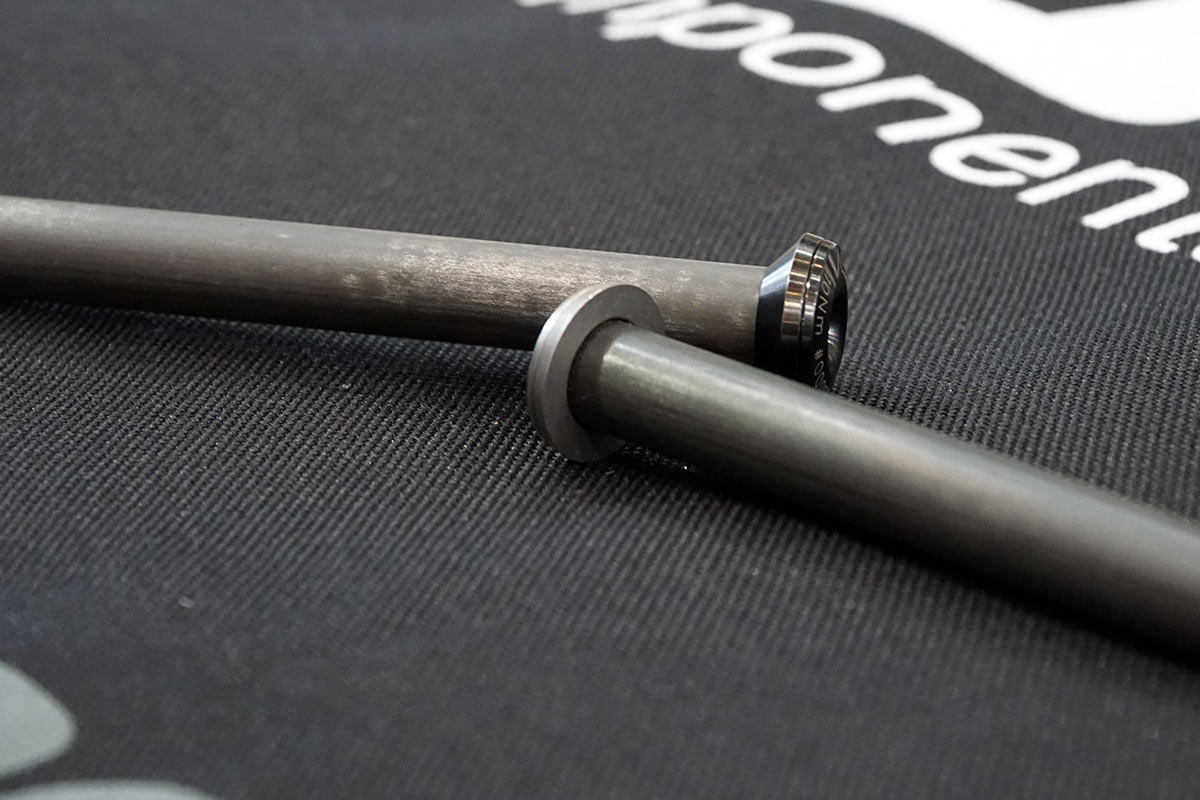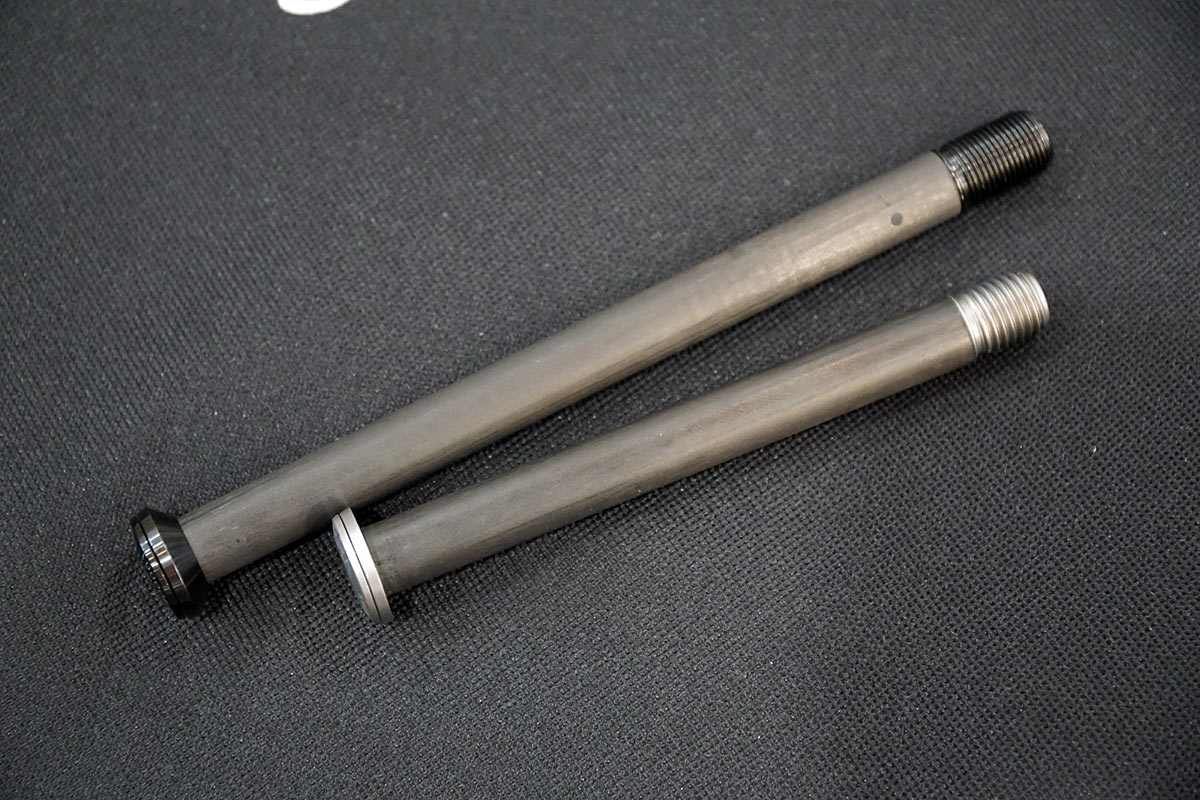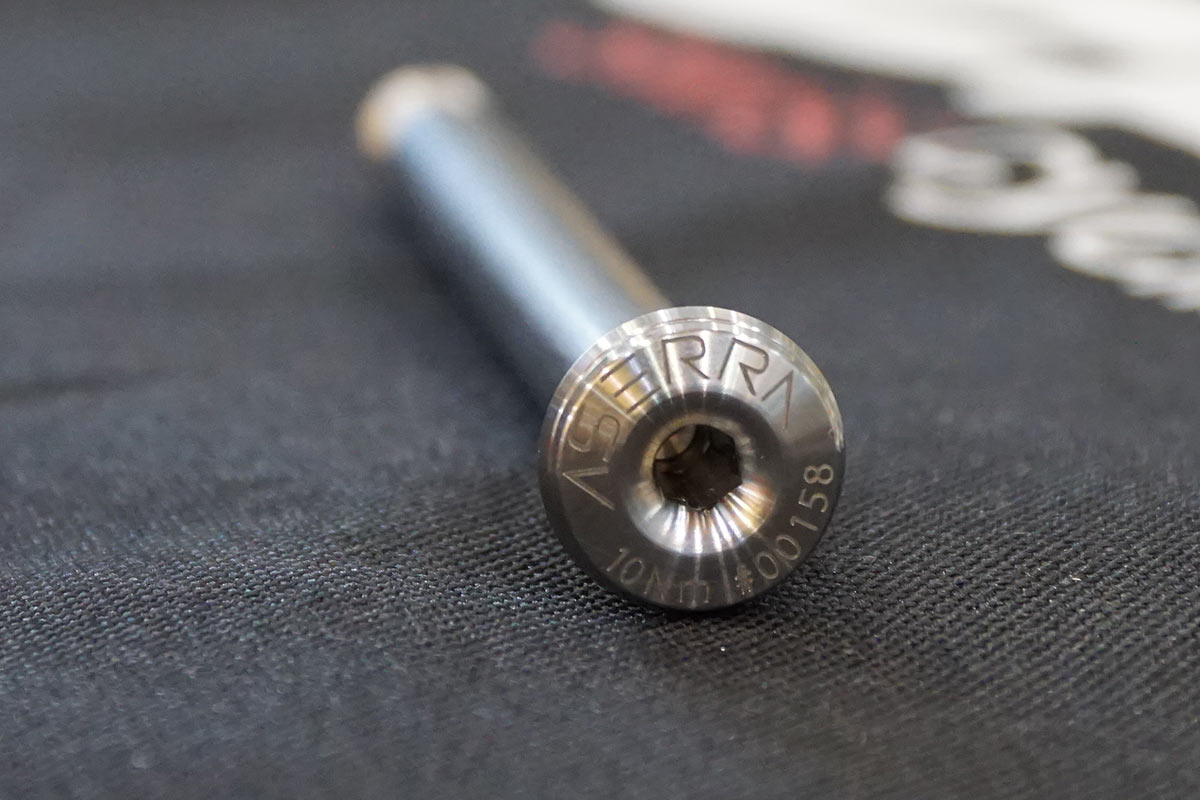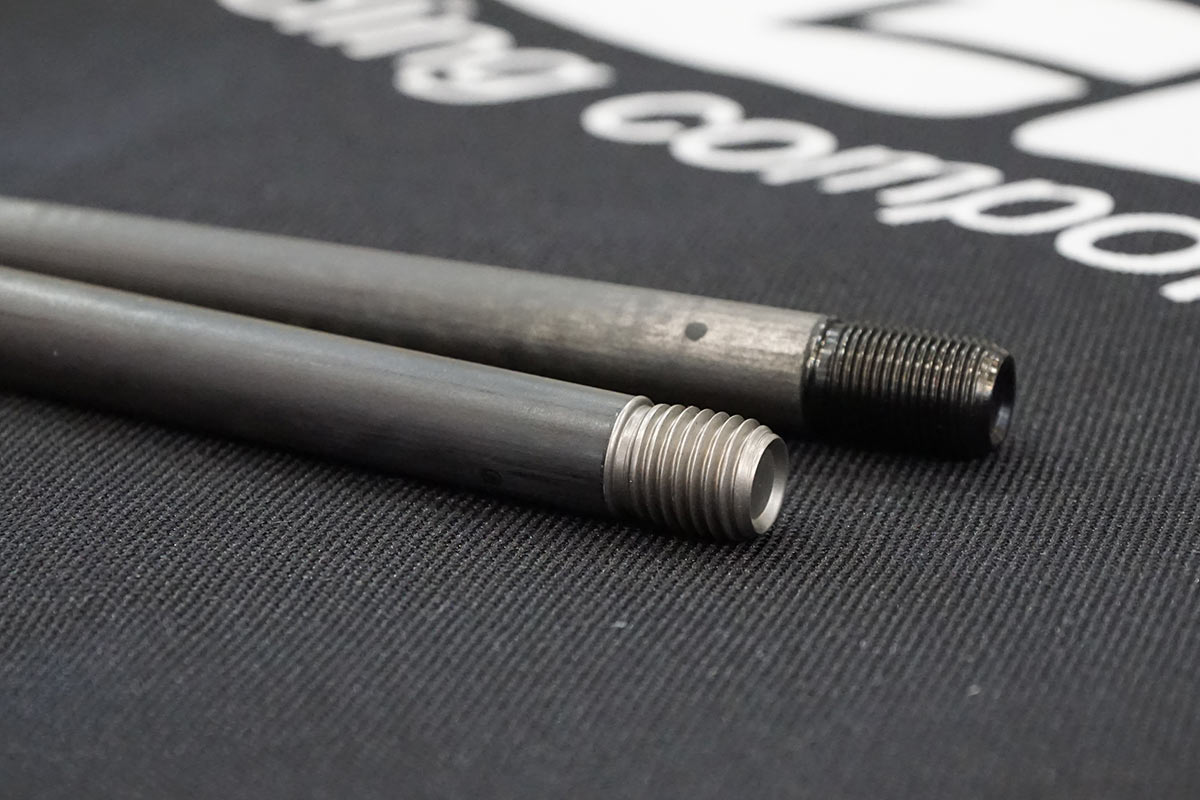Hunting for the last spots to save weight? Try those heavy arse alloy thru axles that keep weighing you down. Holding you back. Keeping you from glory. German upstart Aserra has the answer with their carbon fiber and titanium thru axles starting at just 19 grams.
And these aren’t just lightweight parts without concern for safety. We spoke with them at length about the design, and they’re coming from a guy who makes custom titanium bolts for high end sports car owners seeking every last way to spend their money. Er, improve performance. The point being, he knows how to make parts that won’t break under pressure, and that track Porsche is going to stress a component more than you are. So, 19g thru axles…
The 19g weight is for a 12×120 front thru axle. Don’t have a 12×120 bike? Yes, you probably do. They measure the actual length of the axle, and each one is custom made to fit the exact application it’s sold for. Which means when you install it, the threads will go all the way to the edge of your frame or fork, maximizing contact and support. Weights go up to 28g for the biggest 190mm rear axle.
Those weights are particularly impressive considering the titanium he’s using is about 40% heavier than alloy would be. The Ti inserts run deep enough to handle the shear forces where it sits inside the dropout. They use automotive bonding agents with insertion ports to ensure adequate glue gets where it needs to go. Hex drilled tool ends offer the highest precision tool interface.
It’s a hollow carbon shaft, with sealed ends so they won’t fill with dirt. Available in many lengths, with all the popular thread pitches. And different finishes. Retail is €99.50 per wheel.



